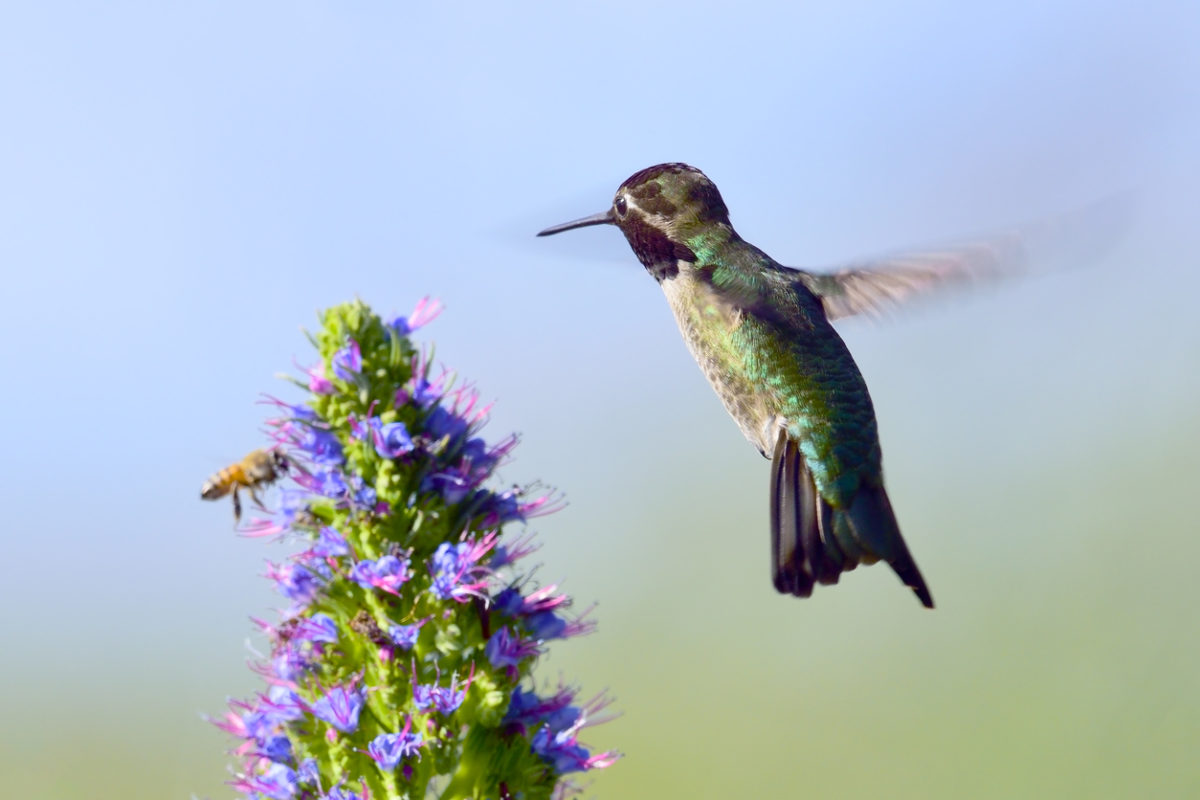
Help your plants and the planet. Attract good bugs and birds to your yard.
April is Earth Month. Each week this month we will feature a blog post about steps you can take to help protect our planet.
This week’s feature is good bugs and birds. Welcome bees and other beneficial insects, birds and other wildlife to your yard.
Attracting good bugs
Many insects in your garden are helpful. They can:
- Pollinate fruit trees and berries.
- Eat the pests that harm your plants.
- Eat plant waste and break it down into fertilizer.
- Provide food for birds and animals that also eat pests.
- Aerate and improve your soil.
Attracting pollinators
Pollinators are essential to our environment and to the food we eat. They help more than 85 percent of the world’s flowering plants to reproduce, including more than two-thirds of the world’s crops. Pollinators also help provide food for birds and mammals. Most pollinators are beneficial insects such as flies, beetles, wasps, ants, butterflies, moths and bees.
If you would like more pollinators in your yard, the best thing to do is to grow flowers that produce nectar. Pollinators need nectar: it is full of sugars and is their main source of energy. They need pollen because it provides proteins and fats in their diet.
Here are a few lists of flowers that attract pollinators from a blog post we wrote last June honoring National Pollinator Week. Native wildflowers, flowering shrubs and other native plants are all good choices. Choose plants that bloom at different times of year, so different species can find food through the entire growing season.
Scientists have found that native plants are four times more attractive to native bees than exotic flowers. They generally grow well in your garden too. They tend to be adapted to local growing conditions, so they thrive with minimum attention.
In addition to attracting pollinators to your yard, you can also buy or rent mason bees for early season pollination and leaf cutter bees for pollination later in the season. See our recent blog post.
Find out more about pollinators from the Xerces Society and the Pollinator Partnership.
Attracting other good bugs
Several species of insects eat aphids, such as lady beetles, green lacewings and dragonflies. They like nectar, so are attracted to the same plants as pollinators.
There are also beneficial insects that live in the ground, such as ground beetles, rove beetles and centipedes. They eat other garden pests. They may benefit from low-till gardening techniques.
A yard that has a few “wild” areas, such as places with unpruned stems and leaf litter, will attract more beneficial insects.
Avoid using pesticides. They will kill both pests and beneficial insects. The pests will rebound more quickly than the good bugs, making the problem worse.
Read more about specific beneficial insects and how to attract them in the ‘Good Bug’ photo guide.
Attracting birds and other wildlife
As population grows and more land is developed, birds and other wildlife are losing critical habitat. Logging, agriculture and housing are taking away forests, grass lands and other wild places.
You can help by making your landscape an attractive and safe place for wild species. You may get the added benefits of listening to bird songs and observing our feathered and furry friends.
To attract more birds and wildlife to your yard, you need to provide three things: water, food and shelter.
Water
- Provide a birdbath, garden pond or other source of water. This will act as a magnet to birds and other animals.
- Keep plants near the water source pruned low so cats can’t hide nearby and attack birds. Cats are a major threat to birds.
- Change the water often so it is fresh and clean.
Food
- Most birds prefer to eat insects. Plant nectar-producing plants and allow some wild areas, as described above. This will attract beneficial insects and provide food for birds.
- Avoid the use of pesticides which can kill birds or the insects they eat.
Shelter
- Birds and other wildlife need places for refuge and nesting. Plant a wide array of shrubs and trees in different sizes and heights to attract diverse bird species.
- Leave snags (dead trees) if they are not safety hazards. Bird houses can provide shelter if you have no snags. And leave dead branches as perches for birds.
Become a Backyard Wildlife Sanctuary
The Washington Department of Fish and Wildlife has a Backyard Wildlife Sanctuary program to help people manage wildlife around their homes and property. The department acknowledges efforts to provide habitat for wildlife through a certification program.
Find out more about the program and sign up to make your landscape an official Backyard Wildlife Sanctuary on the department’s website.
